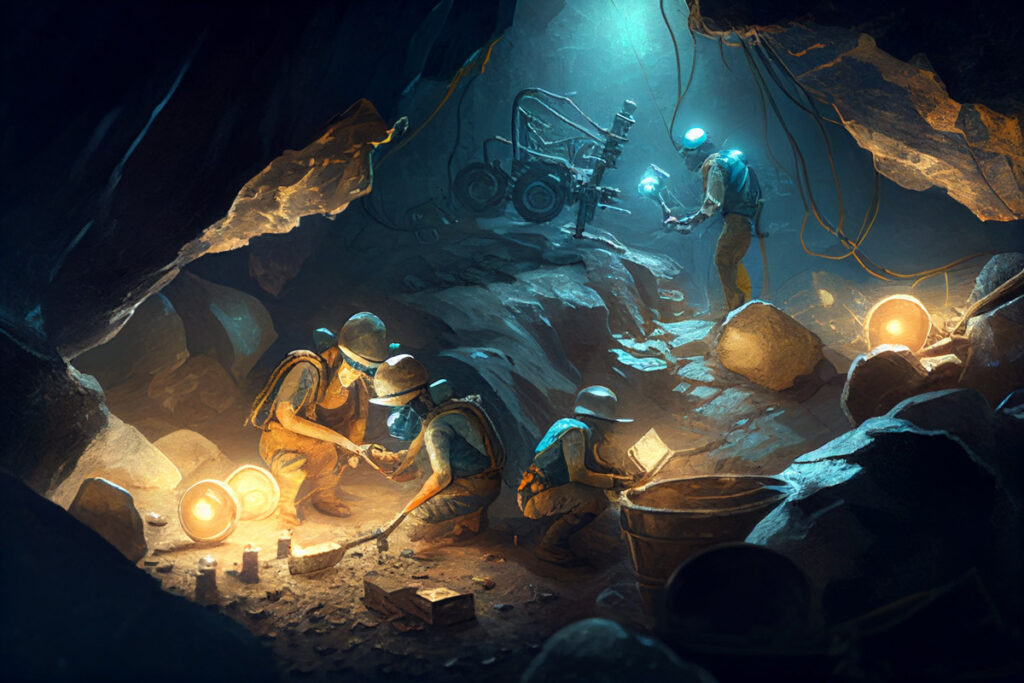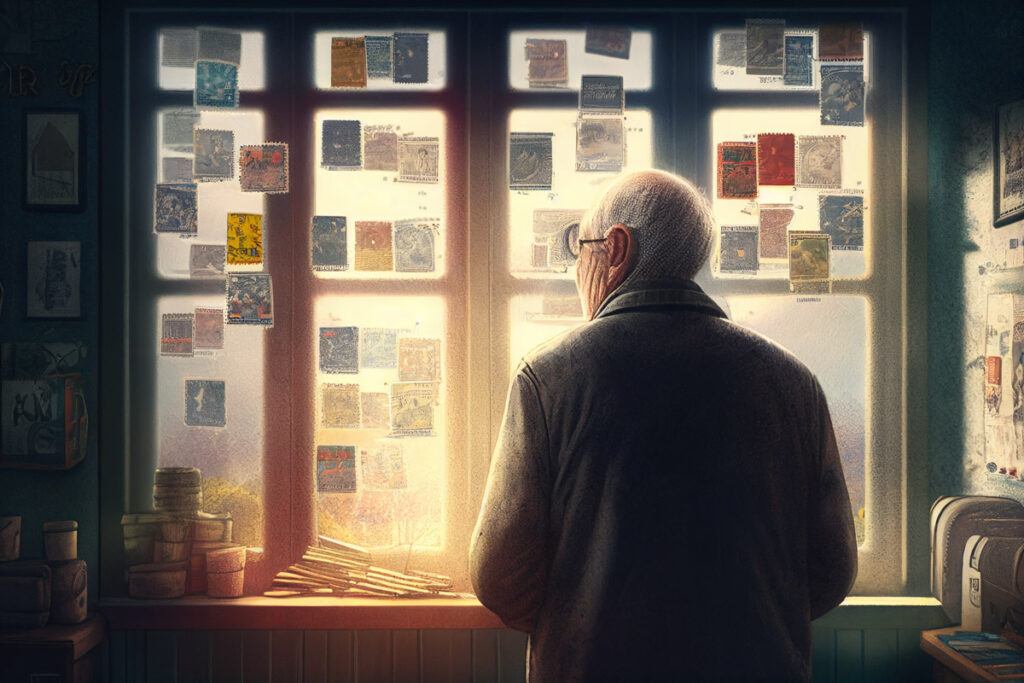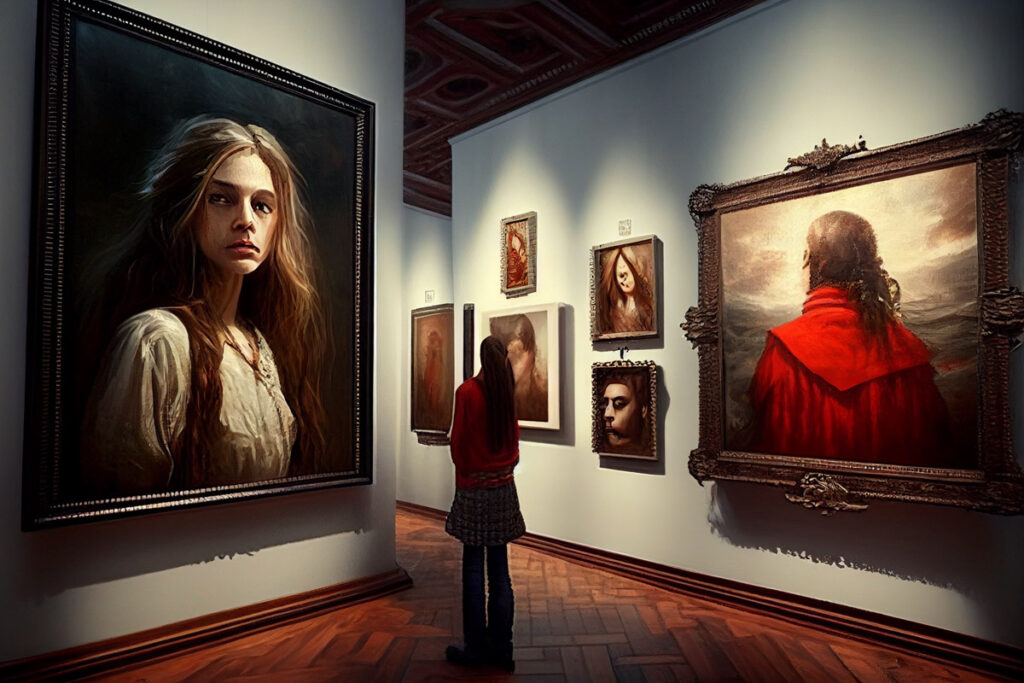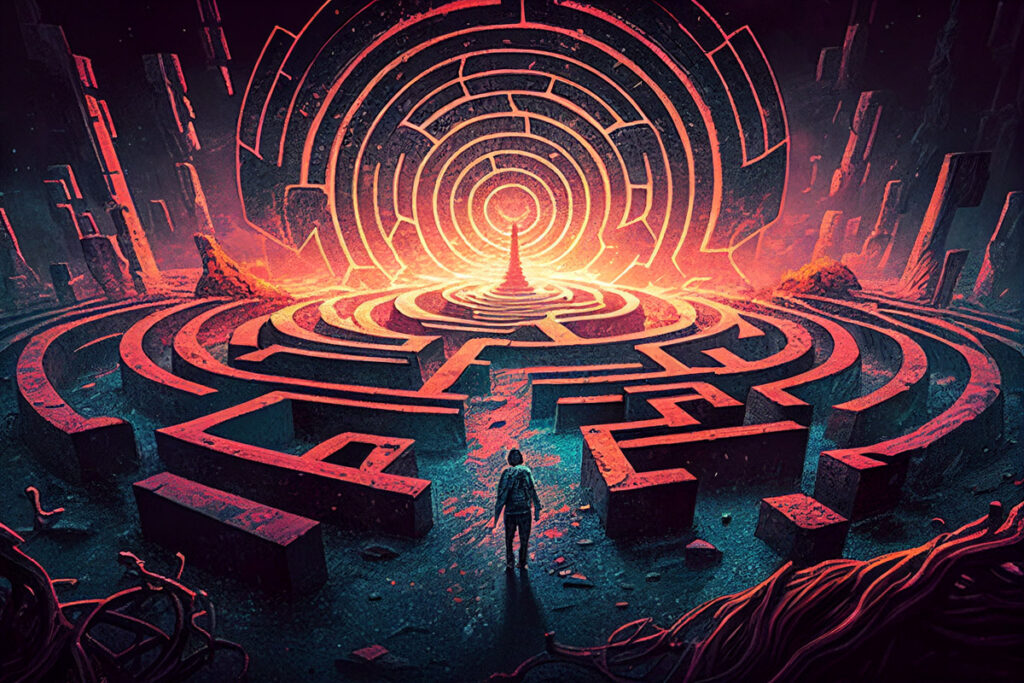In this guide, I explain if and how you can earn money by selling your photos (or videos) as NFT.

After the news of a JPG file being sold at auction for the incredible sum of $69 million, NFTs exploded in popularity.
Some think this is yet another speculation related to cryptocurrencies. Others think this technology is here to stay, and it is one of those innovations that can change the world, a bit like it was for the Internet.
Regardless of what people may think, it’s only fair to get informed and see if there’s any use for it, especially for those who, like me, already profit from selling stock photos and video footage (here’s my guide).
This article is written for those who do not have much technical knowledge on the subject. I tried to explain things as simple as possible. Keep in mind, however, that we are in the early stages of adopting this technology, so it is a complicated subject; everything is changing very quickly, and there is no real market regulation. This means that there are questions that, for now, have no answers.
What is an NFT?

Wikipedia gives this definition:
A non-fungible token (NFT) is a unit of data on a digital ledger called a blockchain, where each NFT can represent a unique digital item, and thus they are not interchangeable. NFTs can represent digital files such as art, audio, videos, items in video games and other forms of creative work. The NFTs can be bought on an NFT market.
Are you confused? The language is quite technical and difficult to understand for those approaching this world for the first time.
Let’s take a step back. To understand what an NFT (non-fungible token) is, it’s better to give an example of what an NFT is NOT.
A fungible object (FT) is an object that is completely interchangeable with another belonging to the same category. A very simple example is the €10 bill. Every €10 bill in circulation has the same value, no matter where it came from, who gave it to you, or how long it has been in circulation. With any €10 bill, you can always buy goods equivalent to their face value. If your €10 bill is stolen, you can earn another €10 bill and “replace” it without any problem or anyone noticing.
An NFT, on the other hand, has three main characteristics:

- Unique and verifiable identity
- Demonstrable scarcity
- Indivisibility
A simple example of NFT is pets. Let’s assume that I have a dog named Snoopy. Snoopy is unique. There is only one in the world. He is indivisible, and if I were to replace him with another dog, he would no longer be him. Dogs are not interchangeable and, therefore, are an example of something that is not fungible.
Another example of NFT is limited edition cards. Unlike Snoopy, some cards have multiple copies but still have a serial number that identifies them individually. Animals are not collectable items, but the example makes you understand that each NFT is as unique as Snoopy.
What determines the value of an NFT?

NFTs are just the latest materialization of an obsession that is part of human psychology: collecting objects. However, there is no universal rule to determine the value of a collectable object. Some parameters are used to understand if an object has a value, such as its rarity, provenance, and quality. But the value is still determined by how much people are willing to spend, which is as simple as that. If you think the photo mentioned above that was sold for $69 million doesn’t make any sense, you’re probably right. But someone was willing to spend that money, which is its value.
Until recently, this exchange of objects was limited to physical goods such as paintings, stamps, phone cards, etc., and it was not possible to replicate the parameters mentioned above (rarity, origin, and quality) in the digital world. After all, every digital file can be replicated with a simple copy/paste, thus invalidating the concept of scarcity and unique and verifiable identity.
The NFT revolution
The real revolution of NFTs consists of overcoming this limitation (only physical assets could be non-fungible) for the first time, thanks to blockchain technology. I don’t want to go into detail and explain what a blockchain is and how it works because it would require a dedicated article (you can find the definition on Wikipedia here). The point is that NFTs work thanks to the blockchain, the same technology behind Bitcoin, but used for a different purpose.
- Smart Contracts (computer programs running on the blockchain) can determine that, for example, there will only be X copies of a file, thus creating the first prerequisite for the existence of an NFT: demonstrable scarcity.
- Blockchain makes it possible to trace every single transaction since the addresses of each block are public, and the blocks are all connected (hence the name blockchain). This creates another prerequisite for creating an NFT: a unique and verifiable identity. It is possible to verify that the artist truly created it, and each NFT produced is unique since it has a digital serial number.
Use of NFTs

NFTs have become very popular, mainly in video games, since they allow people to exchange rare collectable items (such as weapons) outside the markets created by software developers. A few years ago, for example, the CryptoKitties craze exploded. The same concept can be applied to any digital file, including music, photos, videos, and Tweets.
When I first started learning about the world of NFTs, I immediately wondered if it was possible to use them to sell photos (and stock footage), especially since agencies like Shutterstock keep reducing the commissions for photographers.
Having control of your work and determining how many copies to sell and at what price seemed interesting.
The first comparison that came to my mind is with stock agencies that allow you to sell your photos exclusively, thus creating a sort of scarcity of your work. But, even though there are some similarities, NFTs are very different.
The world of NFTs is much closer to the world of auction houses.
NFT pros and cons

These are some of the pros and cons I’ve considered while considering using NFTs to sell photos and videos. As time passes and technology matures, things will probably change for the better.
Secondary market: perpetual commissions

Once an NFT is created, the artist will earn commissions every time the file is sold to someone else. For example, it is as if a painter could collect commissions every time the painting is sold at auction to a new collector.
The total number of copies and commissions are determined when the NFT is created (this process is called minting). The commissions will be paid directly in cryptocurrency (often Ethereum).
Upfront cost

Creating an NFT and minting the file has a cost in cryptocurrencies. The type of cryptocurrency is dictated by the type of blockchain used. In some cases, you will be spending Ethereum: in others, Binance Coin. In other cases, Ada. However, the list of NFT coins is getting longer and longer, as you can see here.
Remember that, just like with classic stock agencies, there is no guarantee that the file will be sold. This creates a big problem because using Ethereum, for example, minting a file can be very expensive (it can be normal to spend up to 50€ or more for a single file). The reason is related to the Ethereum blockchain, and even if an update is coming, there is no guarantee that things will improve substantially. Other blockchains (such as Binance Smart Chain) have much lower costs, but you still have to pay for every file you mint. It’s unthinkable to upload thousands of photos, as it’s common with classic stock agencies, waiting for them to be sold.
Technological Gap

The biggest limitation of NFTs is that it’s currently fairly difficult for many people to start creating them. First and foremost, you have to buy cryptocurrencies. Although there are increasingly popular tools, such as Binance or Coinbase, buying and selling these coins is a barrier for most people. I regularly get requests for help from people who don’t understand how to use microstock websites. I can imagine the difficulties many will have trying to use cryptocurrency trading apps and digital wallets.
Once you have purchased the coins, you must transfer them to a digital wallet such as Metamask (making sure to use the right blockchain address). Then, you have to connect the digital wallet to one of the sites that allows you to exchange NFT, such as Opensea.io. Once done, you can upload the digital file and mint it by paying the commission.
In short, as you can see, it’s a very complex process, unlike stock agencies, where you are ready to upload and sell your photos in just a few minutes. The other side of the coin is the fact that this barrier, for now, creates less competition, and whoever enters the market first has a better chance to succeed.
As time goes on, the process will surely be simplified.
Direct relationship with the customer

The biggest difference between the classic stock agencies like Getty, Alamy, etc, and marketplaces that allow you to sell NFTs is that the value of the work is decided by the artist (or through an auction) and not by the agency itself. Also, no middlemen take most of your earnings in commissions. Typically, photo agencies keep between 50% and 70% of the sale price in commissions. NFT platforms keep a small commission, which is low (around 2/3%).
With NFT, you have a cost to create the file, but the cost is related to the blockchain used and not the site used to sell the work. After the initial cost, you can keep all the earnings (if and when you sell the file). The downside (quite big, honestly) is that it is up to you to promote your work.
Selling photos as NFT is more similar to using platforms like eBay than microstock agencies. You put a digital file for sale, but there’s no guarantee that people will be interested in your work, and you may end up just spending money instead of making money.
What are the differences between the various platforms?

Although the end goal is still the same (to create NFTs and have a virtual space to sell them), there are substantial differences between the various sites.
The first big difference is that there are two main categories of marketplaces:
- Curated marketplaces: the team behind the website decides if and who can become an approved artist, and they also require exclusivity (like some photo agencies). SuperRare and Nifty Gateway are examples of this kind of website.
- Open marketplaces: anyone can upload and mint NFT. Rarible and OpenSea are open.
The exclusivity given to curated marketplaces is NOT on the artist, but on the artwork, so even if you were to give exclusivity to SuperRare, you can upload different works on Rarible (at least in theory, but it would not make much sense as you’ll see later).
The second distinction is about the types of sales allowed on the platform.
- Some, such as SuperRare, work like eBay or auction houses. At the end of a specific period, whoever placed the highest bid gets the work.
- Other sites, such as Nifty Gateway, allow you to sell your artwork with more options: you can decide whether to make auctions, open editions, silent auctions or limited editions.
FAQ about NFTs and photography sales

If I have to be honest, there are more questions than answers for now. Some of the doubts I had were answered after I contacted some agencies. Other questions have no answers, at least for now.
Can I sell a photo I uploaded to Shutterstock (or any other agency) as an NFT?
There are currently no laws or regulations prohibiting this practice. The marketplace dictates the rules you use to create and sell the NFT. Some websites don’t have rules, and others do.
Beyond the written rules, remember the ideal behind NFTs: the value is tied to the uniqueness of the work and its scarcity. Does it make sense to sell a file on Shutterstock and then create an NFT? Keep in mind that those who buy NFTs are supposed to be collectors. They are the ones who value the work by deciding to buy it. If it turns out that an artist is “cheating”, what kind of sales prospects do you think he will have? Would you buy a stamp for 1000€ (for example) knowing that you can buy the same stamp for 1€ in a different store? If you wouldn’t, what makes you think others would?
Can I create an NFT on every available Blockchain?
The answer is pretty much the same as before. There are currently no limitations, but does it make sense to do this? The more common an object is, the less valuable it is, not the other way around. It’s against your interest to create copies of your work on different blockchains. The question is legitimate since, in stock photography, it’s often good to sell the same photos on different platforms (unless you have given exclusivity to an agency). In the NFT world, this doesn’t make much sense.
What are people doing with NFTs?
There are two categories of people who buy NFTs: speculators and collectors. Speculators buy, hoping to resell at a higher price. Collectors, on the other hand, buy because they appreciate the artist and the work he has created.
There is also a market for devices that reproduce NFTs (such as digital picture frames, etc.), and there are virtual worlds in which galleries, museums, private homes, and virtual spaces are set up with NFTs. However, the whole thing is very abstract, and I understand it can be difficult to understand completely.
Final remarks on NFTs and the world of photography

After this lengthy article, the question that interests you the most is probably only one: can I make money selling photos like NFT?
The answer is: it’s up to you. The NFT world is perfect if you create limited-edition digital artwork. Whether it’s paintings, photos, videos, or anything else, the price is tied to the file’s scarcity and the artist’s reputation. Perhaps this is the hardest part to achieve: creating a community that appreciates the people behind the artworks and knows how to value them. At least, this is how the NFT market works at the moment. I wouldn’t be surprised if things will change in the future and even stock photography agencies start to adopt this technology in some way.
If you already sell microstock or stock footage (best agencies here), starting to sell NFT requires a mindset change. You can’t upload thousands of pictures like you’d do on Shutterstock because this has a cost. Focusing on a few works of the highest quality possible is better. Beeple (the artist behind the photo that sold for $69 million) sold his work at a very high price because it took him years to complete it (over 13 years).
If you are a fine art photographer and have had difficulty monetizing your work until now, maybe NFTs can be the turning point for your career. If you are a travel photographer like me, you do reportage or stock photography; at the moment, NFTs are probably not ideal.
If you’ve already created and sold your first photo as an NFT, comment and tell me about your experience. I’ll be happy to include it in the article if it’s helpful to other photographers.
If you enjoyed reading this guide, don’t miss my review of the top AI tools for every photographer. In this other interesting article, I talk about AI-generated images and how you can monetize them.



Hi Fabio, thanks for your article. I have an offer via Insta to sell three photos for 7 ETH each, but I have to put them for sale as NFT. Do you think this is a scam or does it happen often to get more people on the NFT market? How can I act as best, hope you can help out.
Hi Diana. Be very careful. It’s hard to say if it’s a scam, but if they ask you to connect your mMtamask to any third-party website then yes it’s a scam. Otherwise, you can simply mint on Opensea or any other marketplace and send the link. Worst-case scenario you waste a bit of eth for gas fees.
Hi Fabio !
Wonderful pictures, great talent You have indeed.
NFT idea is really interesting but I think it will require some sort of securing rights of creators.
So I have question, if I uploaded my images on some stock gallery (with Free Personal & Commercial Use License type) can somebody use these pictures to mint NFT ?
And if yes can I demand some sort of fee for that ?
Hi Alice. Thanks 🙂
The answer to your question is no: only the copyright owner can mint an nft.
OK
Informative art on NFT. Better than what other offer as online course. I just got the gist. That you have to pay for minting. I thing this the whole gist. Thanks for the good answers too. Greetings from Nigeria
Thanks man
I created a page with nft with my pets. So far no one has bought it? What am I doing wrong? https://rarible.com/Oscar/sale
Only a small fraction of people who put stuff for sale end up actually selling something.
I created a page with nfts as animated gifs with various wildlife animals and insects. I was hoping buyers would use them for possible digital frames and portraits in their metaverses. Here is one of my animated gifs involving butterflies. I create the same image using various color filtering effects.
https://opensea.io/assets/ethereum/0x495f947276749ce646f68ac8c248420045cb7b5e/6822172971026890418880562505450227759252596580722353794181564586661725077505
Any suggestions??
Good luck Ervin 🙂
Hi Fabio. I took a picture of my cat that went viral all over Reddit, Twitter, and FB. Would it be worth it for me to create it into an NFT? Also, what stops someone from copying your photo and then minting it into an NFT even though they effectively stole it from you?
Hi Jay. About the first question, honestly, I have no idea.
About the second question, unfortunately, no one can stop other people but you can contact the marketplace and give proof that you are the copyright owner and they’ll probably delist the NFT.
Hi, just a thought…. but one way to prove ownership, even if someone steals your image, make sure the metadata has your name in it before creating the NFT. Then if the platform you’re selling has the option (such as OpenSea does), freeze the metadata so it can’t be changed. That way if someone does steal the image, their copy will still have the original metadata.
Hello Fabio,
Thanks for the article…I needed to have NFTs explained to me “like I’m a 5th grader” and you’ve done that! A few months ago a friend approached me about helping him sell his unique photographs online, knowing that I already operate 3 Etsy shops. (I say “unique” because he finds and photographs what I consider to be abstract art in strange and different places. (Think early Leonardo Neirman-like images…) Do you think photos like these make good candidates for selling as NFT’s? Obviously since you haven’t seen them you can’t directly comment on their “sellability”, but rather the type of art. Thanks!
P.S. You are insanely talented–your NFT’s are gorgeous!
Hey Eddie thanks for the comment!
I can’t really judge without seeing the images. What I can tell you though is that the most important thing is the community. If you have one already you can pretty much be sure that you’ll sell some. If you don’t then it’s gonna be pretty hard. Good luck!
hello fabio, I have a picture of nature, portraying an African woman with ambitions. Afro hair. It’s really fantastic if you’ll consider it. Thanks
Consider for what?
I have gone through the page where you are explaining earning money by selling photos and videos as nft (non-fungible tokens): is it possible? and you have done fantastic work because you have unique and innovative content.
Thank you Rachits
I have a video of a freak of nature that I recorded of filmed on VHS on 7-19-95. I have on 4-2-22 had the VHS tape converted to DVD and Thumbdrive. I am interested in producing an NFT and selling it on the internet. I can prove that I am the owner, that it is an original and that only 3 people have ever seen the video. No conversion is out there. I feel that it could be very valuable but I also know that I am not the right person for the task. I had significant trouble finding someone to comment to about my video.
Fabio, Your images are fabulous. Your business acumen for this is ideal for this.
I’m a full-time commercial real estate broker so I believe in brokering.
I have numerous amazing images from world travel but would prefer to have a broker handle all the marketing. Would you know who could market my images and provide a generous partnership split? Is such a broker arrangement available out there? I’d prefer to stick with selling apartment buildings. [email protected]
Hi, Ken. Maybe you can check out my article about selling images. I list a series of agencies you can look at.
Hello Fabio, excellent article and those wow stunning landscape photos. I’m curious to know if you sell uniquely all these photos in the form of NFT on Sloika? Thanks in advance.
Hi. Not sure about your question. If you mean if it’s possible to sell the same picture on Sloika AND on another blockchain/marketplace so minting them twice or more, then the answer is no.
I work with a famous music photographer who shot tons from the 60s till now. He is considering NFTs for his work. Would it be more beneficial for him to take the best say 5 to 10 shots of every series and bring them to NFTs. And more importantly can he create multiple NFTs for the same image. Meaning if I wanted to take my fees in NFTs could he create two NFTs. Fantastic Article, thank you so much.
Hi Douglas.
“Would it be more beneficial for him to take the best say 5 to 10 shots of every series and bring them to NFTs.” Definitely.
“can he create multiple NFTs for the same image. Meaning if I wanted to take my fees in NFTs could he create two NFTs.” Yes it’s possible. You just have to specify the amount when you mint the NFT.
If someone buys one of your photo NFTs do they have copyright to it? And what do you do with the original in your possession?
Good question. You can choose the type of rights for your sales when you mint the collection: editorial, RF and so on… Not sure what you mean by “the original”
Excellent article. It covered everything. My most boggling questions got answered. Seriously now i have no doubt at all ! sharing it across.
Fantastic! Really glad I could help
Hi Fabio, you say it is expensive to mint NFTs. Just curious how much in actual terms did you have to invest to mint your series of 15 NFTs on Sloika? Was that an upfront cost, or only something you pay when the NFTs are sold and the blockchain transaction is completed with ETH.
Thank you for all that you do to educate us on this exciting new trend.
Terra
Hi Terra, it really depends. It could be around 200$ or maybe 500$. There is no way of knowing in advance. And yes, unfortunately it’s an upfront cost that you have to pay, no matter if you later sell your nfts or not.
Happy travels. walstib … Just keep truckin’ on… … ( quoted from the worlds finest jamband ) … ; )
I am not a professional photographer. However, I have taken several “cute” family snapshots everyone likes. Would it make sense for me to try to post one or two of these? And what would I have to do? I realize this is a very demanding request–very much like asking you to take me step by step through the process. However, this is the first time I’ve learned anything about this, for me, new phenomenon and it interests me greatly. I’d appreciate anything you can tell me. Thanking you in advance.
Hi Matthew. Unlike stock images agencies, uploading NFT has a cost in terms of gas fees. So keep this in mind. There are several websites where you can do it such as Opensea.io Other websites offer lowers fees but don’t have nearly as many customers as Opensea.
Cheers!
What about a photograph of an art work like the Mona Lisa? Could you create an NFT of that photograph and offer it for sale?
You could technically do whatever you want. Legally on the other hand it’s not quite clear for now.
I have just took the leap into the photography side of the NFT world; I am a professional photographer and have been shooting since the days of film. Like yourself, I have contributed images to many microstock and macrostock agencies, and I also delve in a bit of crypto trading.
I found your article very helpful and have just minted my first ever two NFTs on Rarible.
Thanks. Good luck with your NFT experience.
As a travel photographer you are dependent on the environment. The environment is dependent on the climate change. NFTS are one hell of a problem regarding cost of energy. Don’t you see a problem here?
That’s absolutely not true and actually shows a lack of understanding about blockchain technology (PoS vs PoW). If anything the traditional banking system (that uses Visa and Mastercards transactions) is way more of a problem in terms of climate change. People tend to forget that the “power” of that USD-backed technology depends entirely on the hegemony of the USA as a world power. How much does the struggle for their power actually contribute to climate change? Don’t be afraid of new technology because misinformed people try to FUD you… DYOR
Blockchain does have a significant environmental impact so don’t be so dismissive of this comment.
Not really an argument. Can you please elaborate with facts and not simply with hearsay?
Nft is stored on blockchains that does not rely on power such etherium. However, bitcoin is created or transfered by using power. In the bottom line the impact of nft on the environment is low.
Until Eth 2.0 Ethereum still relies on proof of work.
You give a lot of excellent answers, thanks for that!
At the end you think about the application of NFT for stocks. I am in the same situation like you describe in your opening: it is more stock what I produce (media for some business use) than classic art. The combination from digital photography and NFTs is orignated from a classic artist, ok. But as I understand it, there is a solution potential for us stock producers, either. Typically I cannot not recognize whether somebody copied an image on a website from another website or licenced it correctly. At least when it was sold several times. With a policy like “only licenced correctly with NFT checksum xyz in metadata” I can at least discover when the same NFT is applied more often than once. Lawyers can find misuses easily and enforce a post-licencing procedure as alternative to a penalty.
Of course: for that we needed a cheap blockchain that permits a unique identifier (like a transaction ID) per sale that must be entered in the metadata.
Do you it is possible to apply it in this way?
Interesting scenario. However, I think this is something else than NFT. NFT are by definition not fungible and should be limited.
On the other hands it would be nice to actually sell images using the blockchain (thus being able to track every single sale) without any limitation in terms of the number of pictures minted. About the cost of minting yes that is a current major drawback. Maybe Solana or Cardano will be able to fix this problem. We are still in the very early stages of this technology.
Hi Fabio I have some physical artwork done by me. Just some paying with knife. How do I sell them as nft? Do I simply take pictures and sell it? How the buyer gets benefit of the art which is just photo while I am still holding physical. In that case there are so many great photo frames and painting there in the market. Can someone buy them take picture and sell as nft? I am still struggling to find the real use case and benefit the buyer gets.
Hi Pravin. “Do I simply take pictures and sell it? How the buyer gets benefit of the art which is just photo while I am still holding physical.”
There are several options. Maybe you can sell the NFT and that will allow the owner to qualify for the physical painting that you can send later. Or the benefit is that having one of your NFT painting is being added to whitelist which will qualify the owner for a future airdrop? The important thing is having a strategy, clearly explaining what the buyer gets and then going ahead with the minting
“In that case there are so many great photo frames and painting there in the market. Can someone buy them take picture and sell as nft? I am still struggling to find the real use case and benefit the buyer gets.” Can anyone do it? Yes. Is it legal? Nope. You can sue for copyright infringement, but unfortunately right now is still the wild west, so to speak, so it will take a while for the legislators to catch up.
Question is can I create a litecoin NFT and does etherium allow it to be posted and shared in an etherium wallet?
That’s a good question. Honestly, I have no idea.:)
You have taken many absolutely amazing photo’s … ty
Thanks!
Wondering if one can sell a photo as NFT if it’s already been sold as (micro)stock.
Doesn’t really make a lot of sense honetly.
But this doesn’t make sense to me. You say it’s all about owning the ‘original.’ Even if it is a photo that is sold or used a lot — which would show inherent value or popularity — why wouldn’t owning the original be most valuable?
Let’s put it this way. If you were a painter, would it be more important for you to keep all of your original paintings or sell them for a profit?